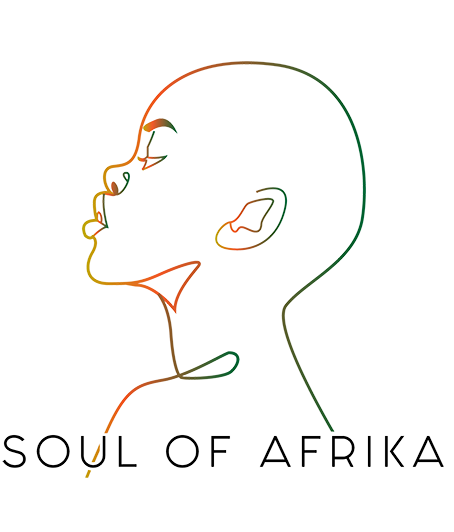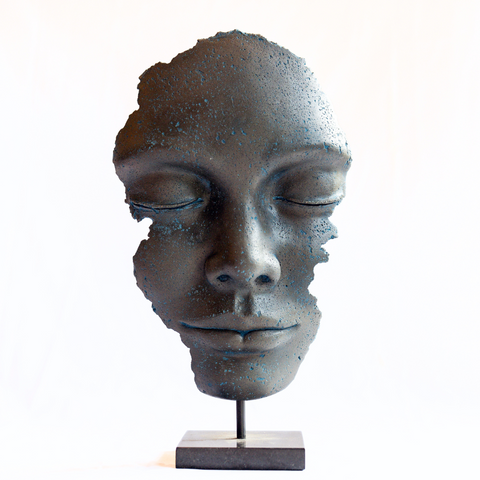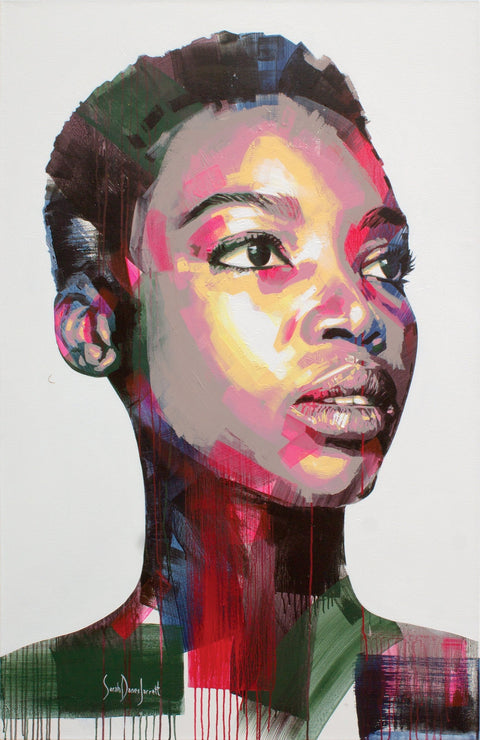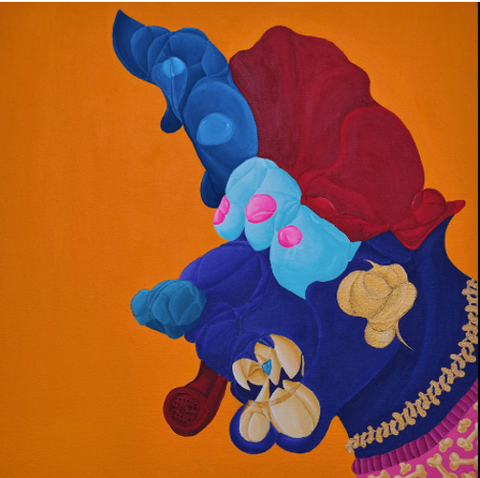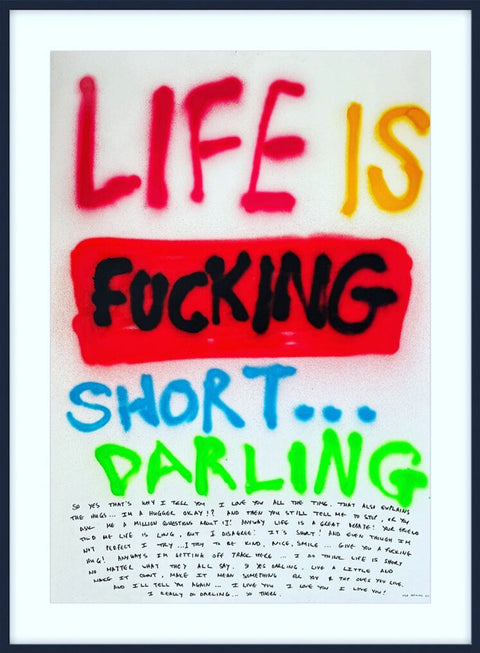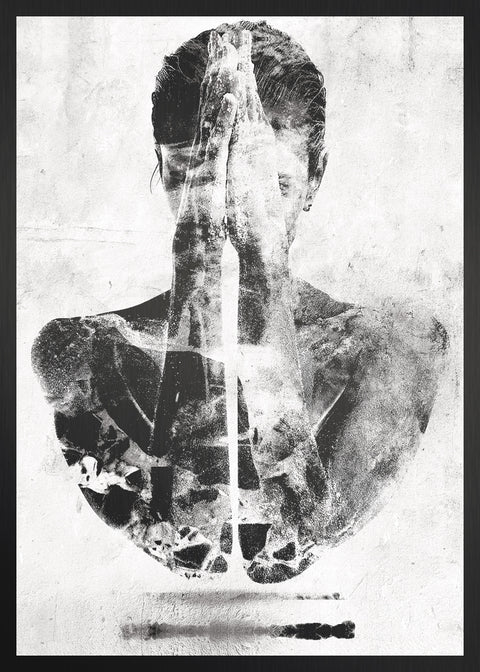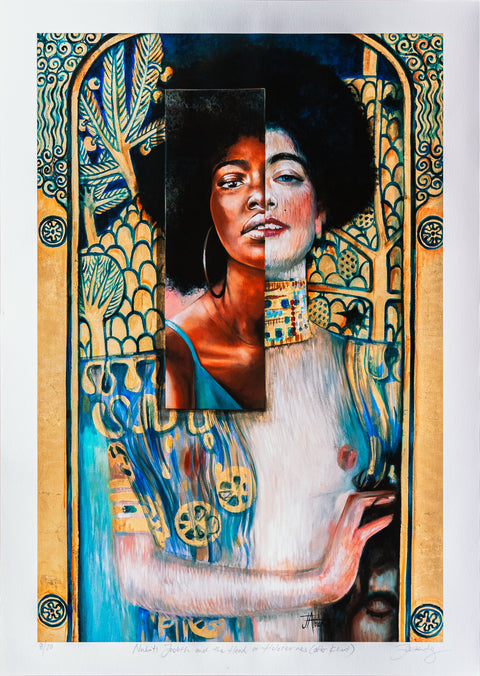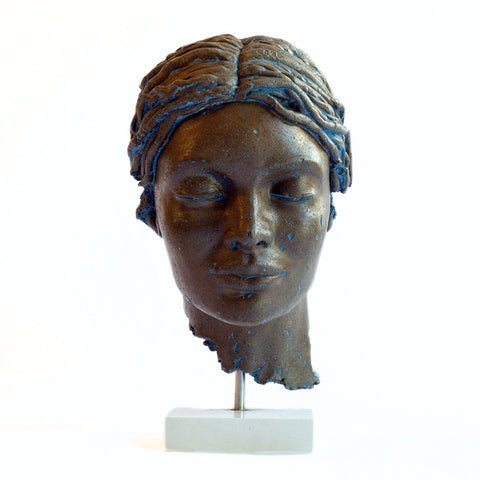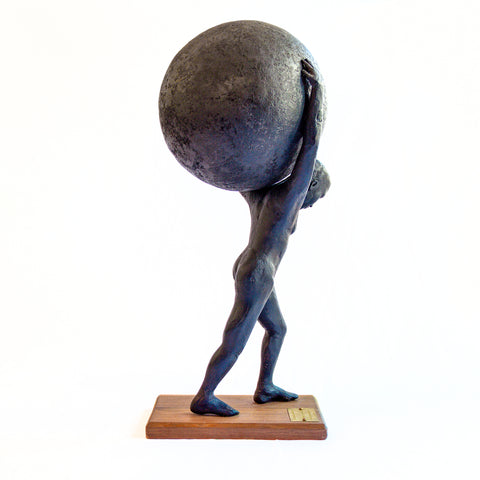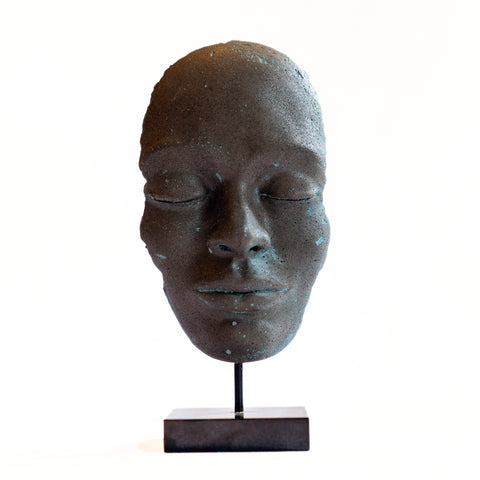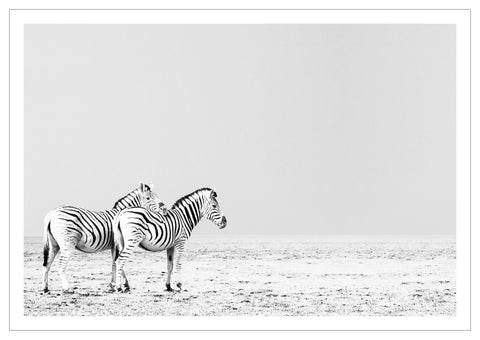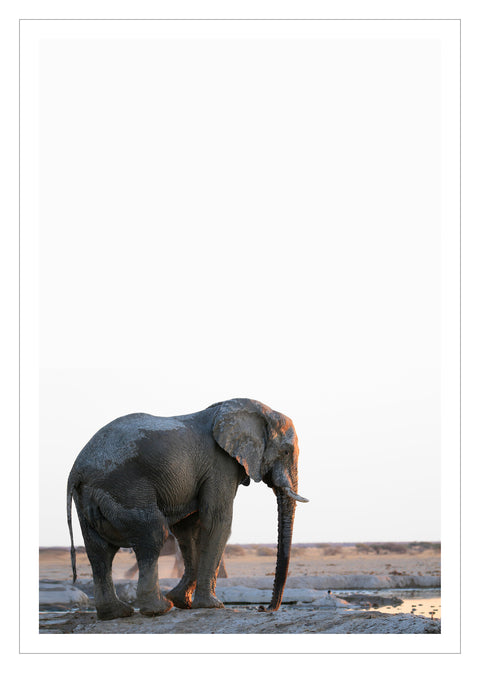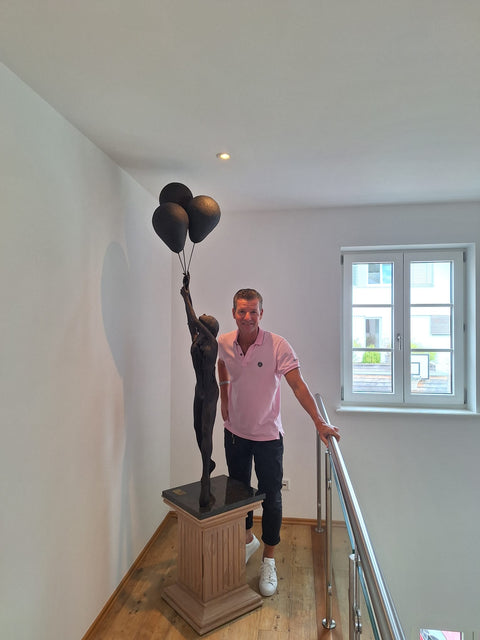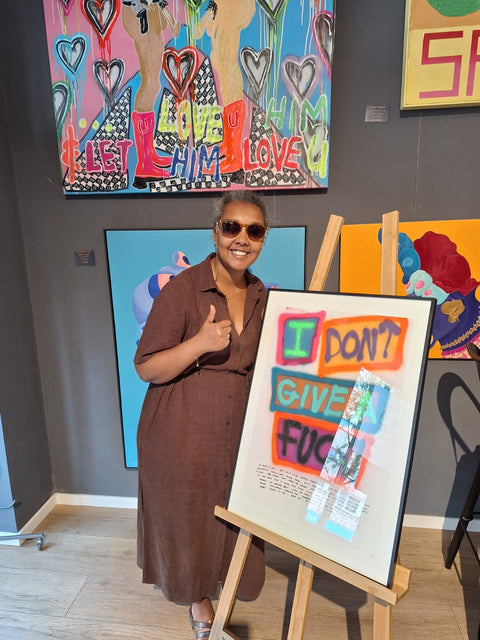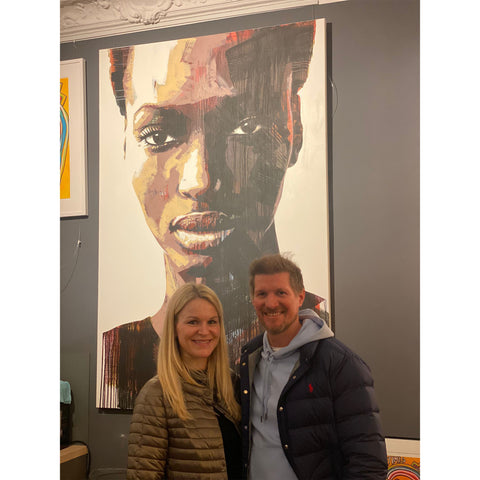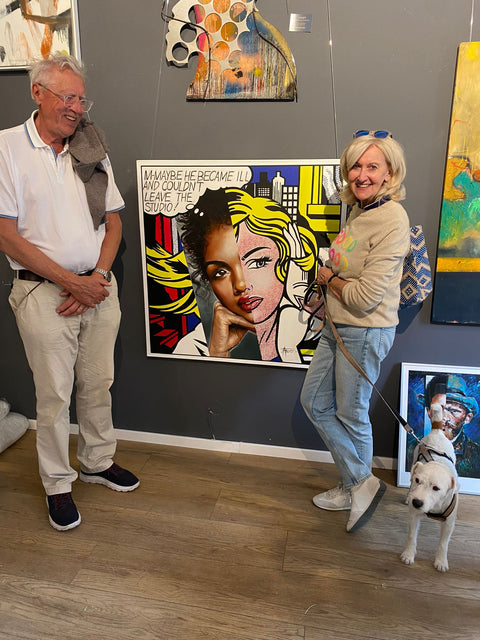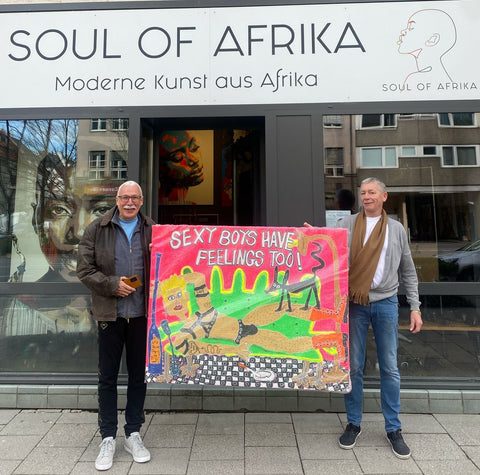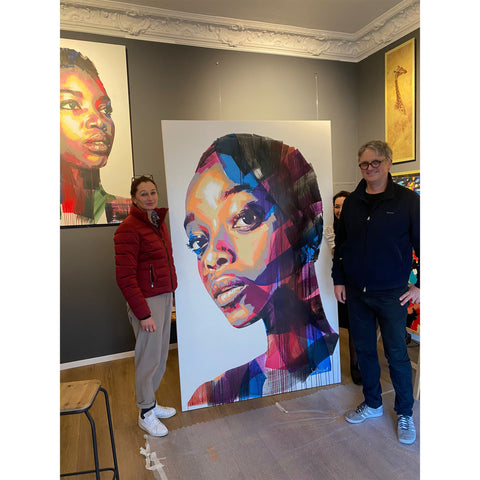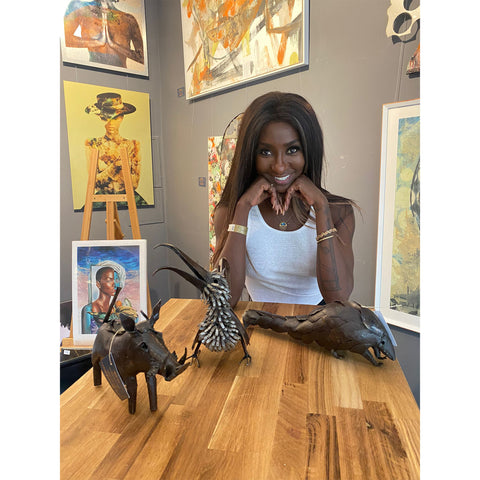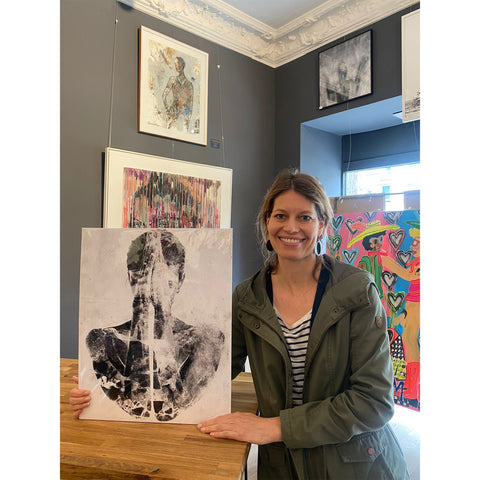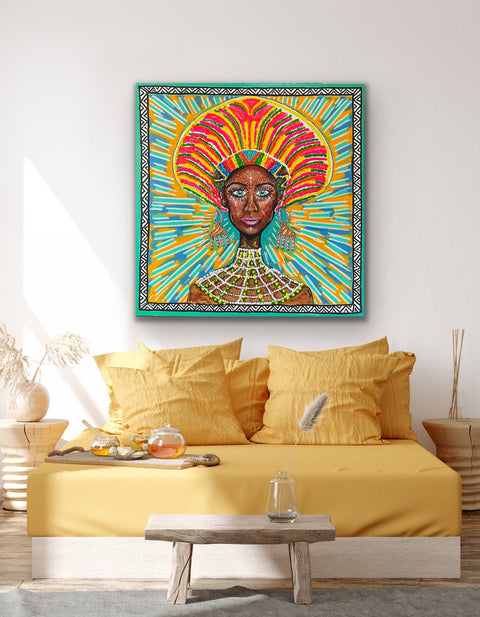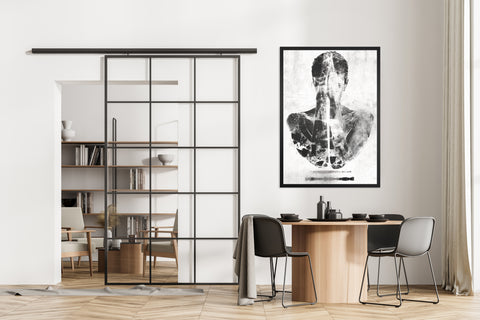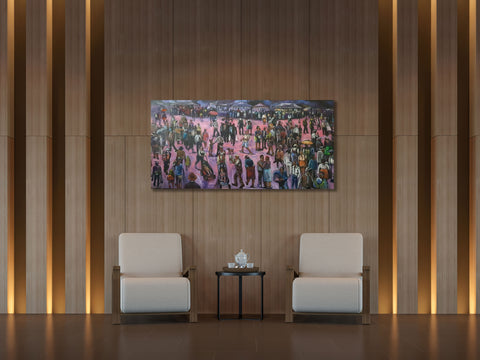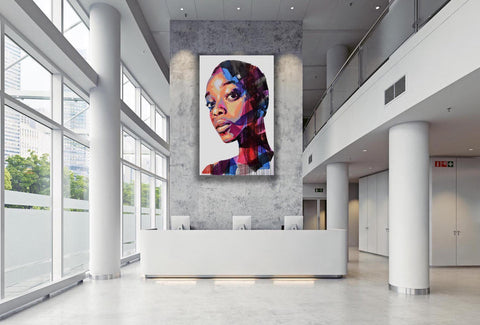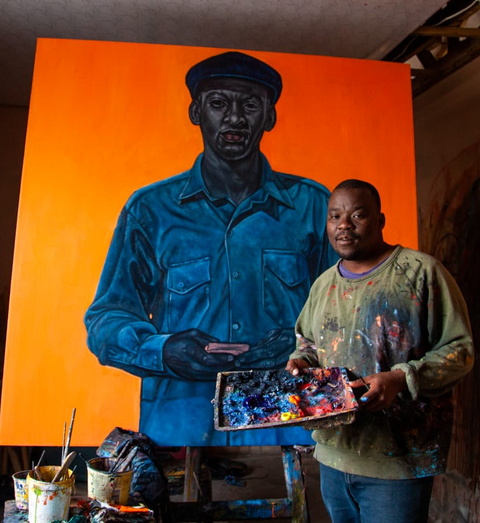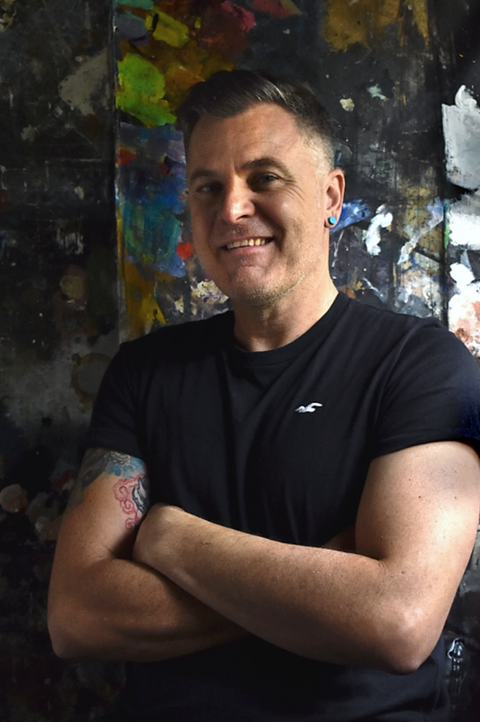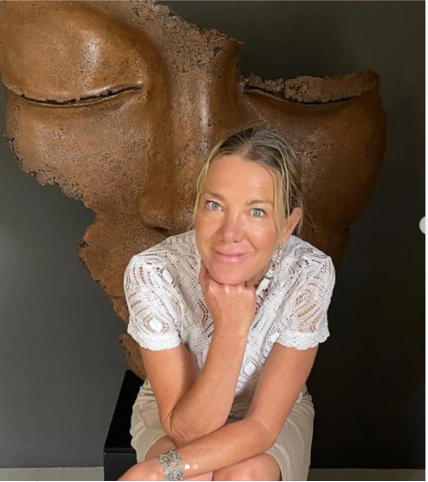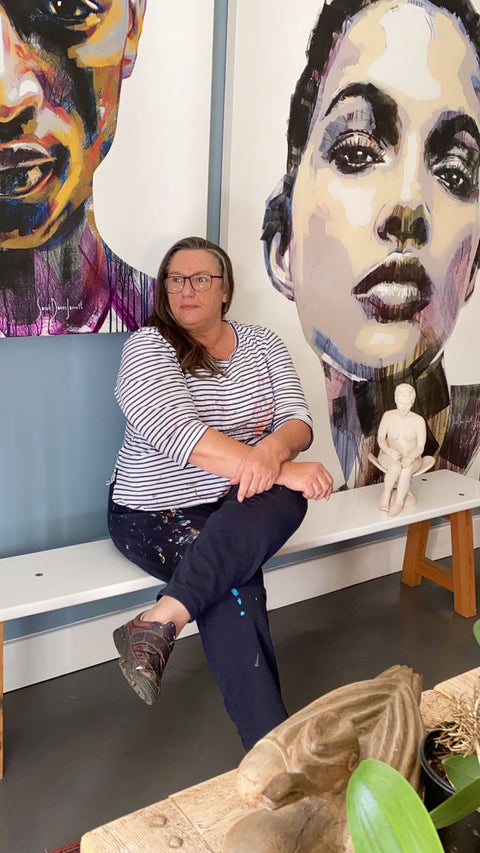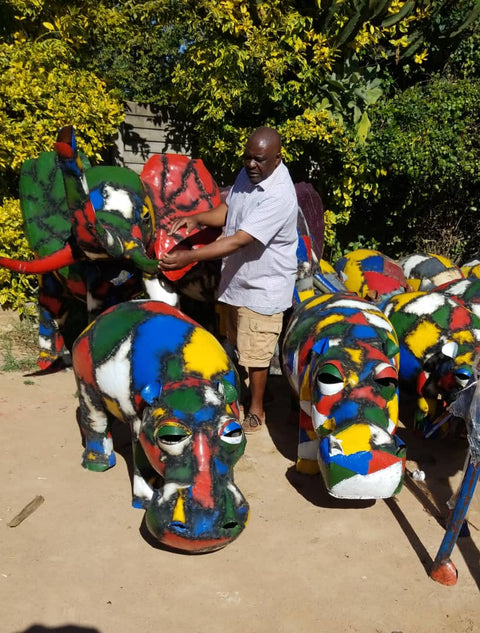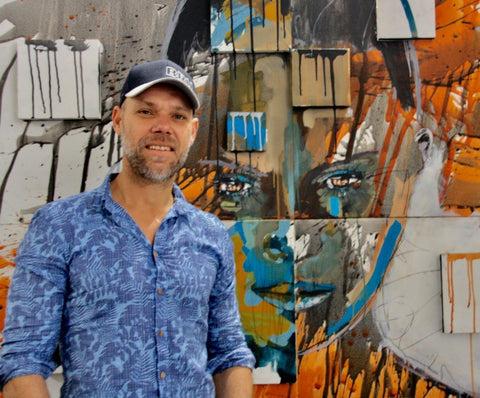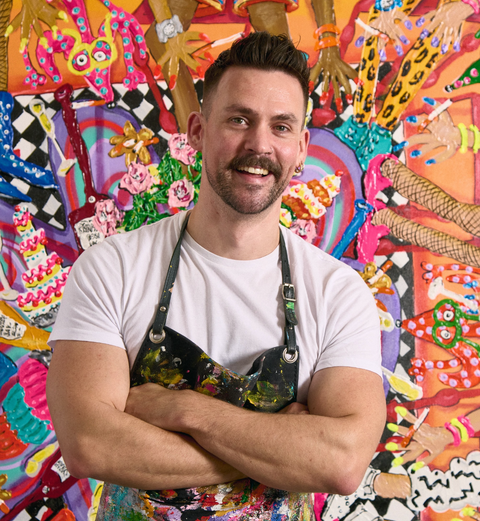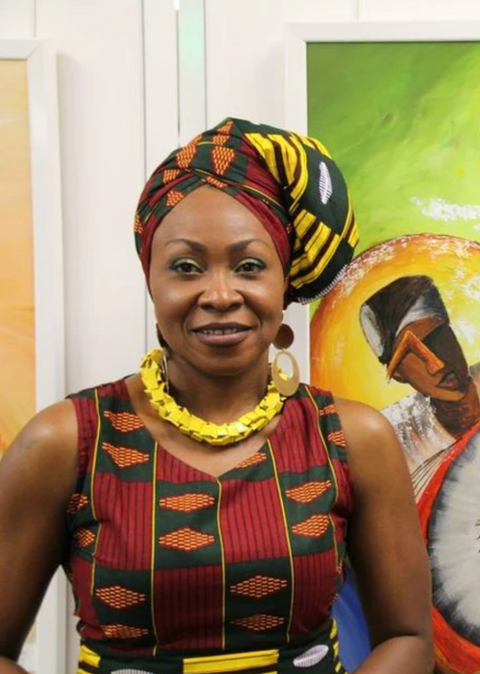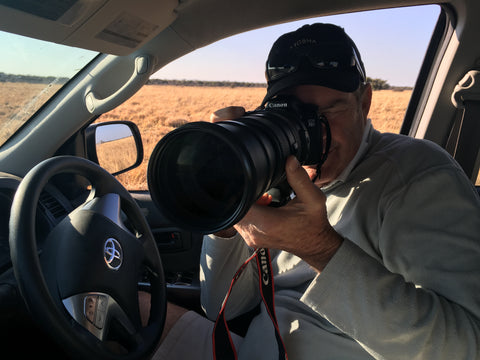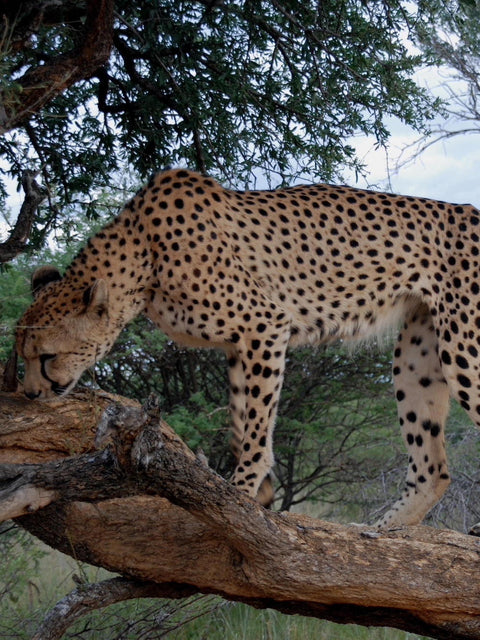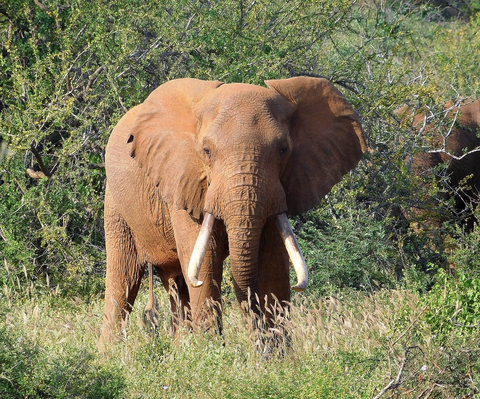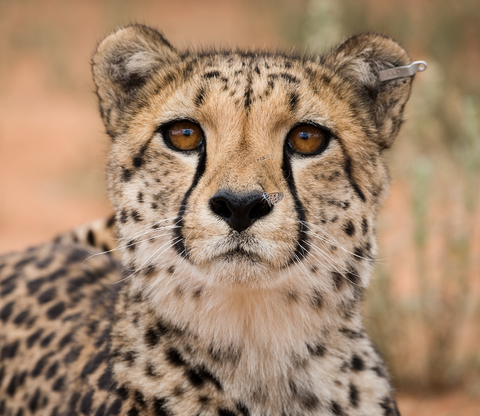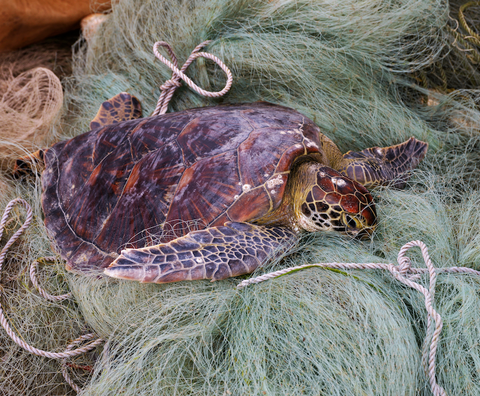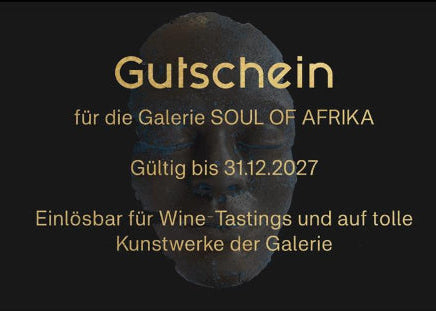
Verschenke ein Stück Lebensgefühl...
... mit einem Gutschein der Galerie SOUL OF AFRIKA!
Ob für Kunstliebhaber, Genussmenschen oder alle, die Freude an außergewöhnlichen Momenten haben:
Mit einem Gutschein der Galerie SOUL OF AFRIKA schenkst du etwas, das bleibt – Kunst, Kultur und einzigartige Erlebnisse.
Unsere Gutscheine sind flexibel einlösbar:
für Kunstwerke aus unserem Onlineshop oder direkt in unserer Münchner Galerie sowie für unsere beliebten Wine-Tasting-Events, bei denen Genuss und Atmosphäre eine besondere Verbindung eingehen.
Here you will find colorful and expressive paintings as well as limited prints and photographs in different sizes. All exhibits are selected by us directly in Africa. Because we want to act as ambassadors for contemporary artists living in Africa. Discover modern art in our gallery in Munich.
painting
Explore allPrints
Explore allSculptures
Explore allPhotographs
Explore allGive your rooms an African vibrancy
Our selected and limited works of art convey the inimitably powerful pulse of a modern Africa that is moving into an innovative and self-confident future. Where can this spirit unfold in your premises? Let our use cases inspire you.
Living room
Office / Meeting
Waiting room / reception
Agency / Law firm
foyer
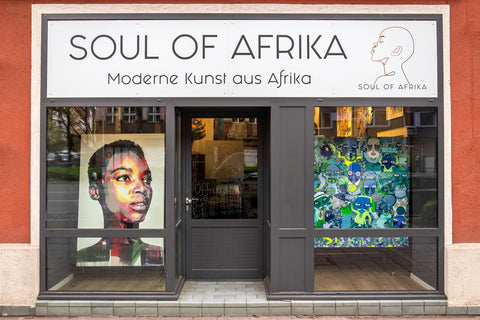
In our Munich gallery you can experience our works of art live
Our gallery in Munich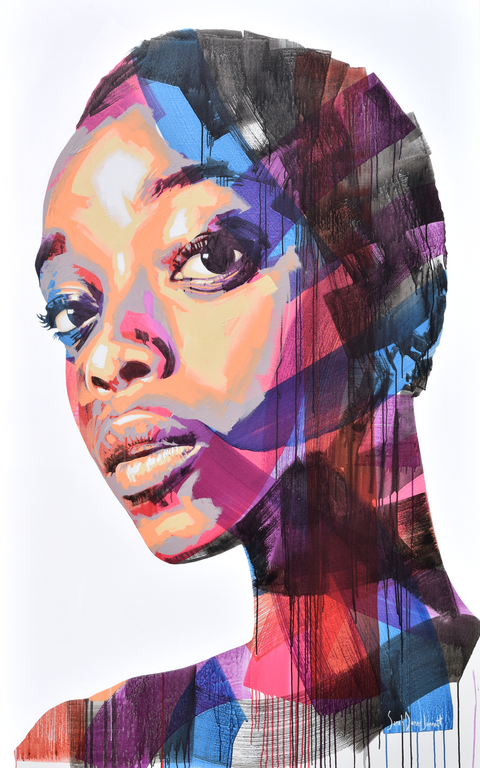
What you should know about contemporary African art
What you should...
What you should know about contemporary African art:
Even in the 20th century, African art was often seen as a mere accessory, adorning the shelves of curiosity shops, flea markets and souvenir shops. Fortunately, this has changed over the years.
In the 21st century, modern or contemporary African art has found its place in art exhibitions and museums around the world. Many famous art museums and exhibitions such as the Tate Modern in London, the MoMa (Museum of Modern Art) in New York, the Venice Biennale, the Centre George-Pompidou in France and the Documenta now house valuable contemporary African art.
In this text, you will learn how contemporary art differs from that of the era of European colonial rule and what identity contemporary African art currently has. We also want to introduce you to some important representatives of this genre and tell you where you can buy the works of contemporary African artists today.
The early art of the African continent
The first known art practice (the first known art evidence...) from Africa are cave engravings, which can be dated back to 70,000 BC. These works of art were probably created by Bushmen and women, the indigenous people of southern Africa.
The earliest statues were created around 50 BC and come from the Nok culture in Nigeria. Over the course of its history, the vast continent of Africa has produced an enormous number of cultural and social practices as well as artistic works, the list and description of which would go beyond the scope of this article.
Traditional African art encompasses the artistic work of many very different ethnic groups. Basically, the term “African art” refers to the art of “Black Africa”, i.e. the countries south of the Sahara.
These are very different from the states of the Maghreb, which are influenced by Berber or Arabic culture. The majority of African art objects come from West and Central Africa, including the present-day states of Mali, Ivory Coast, Nigeria, Cameroon, Congo and Senegal. The artists of that time mainly used materials such as different types of wood, the surfaces of which they usually treated with natural substances such as vegetable oils or kaolin. In certain areas, bronze, brass or clay were also popular. One of the most popular forms of African art was jewellery. It signalled a person’s social status. Traditional materials such as tiger’s eye, sisal, hematite, coconut shell, ebony and glass beads were often used in its production. Art such as sculptures are made from wood, ceramic or metal. Pottery was also a widespread craft in many regions. However, examples from this period are rarely seen.
Most of the works of art that can be seen in museums or collections are usually no more than 150 years old. The reason for this is that art created in colonized Africa was only valued and collected as objects of "authentic cultures" from the beginning of the 20th century. Nevertheless, African art has a long history in the West, as many modern artists as well as contemporary artists today have been influenced by the traditional art of Africa.
The intense immediacy, the liveliness, but also the special styles and perspectives make the art of the indigenous peoples of Africa so special.
A new era for African art begins Since art has developed in so many different regions, the development can only be roughly divided. In the 19th century, African artists were already dealing with the issues of the world and in the 20th century they began to process these findings artistically.
During this period, many colonized countries in Africa began to reclaim their autonomy, leading to a resurgence of patriotism, pride in their traditions, and freedom of expression, which inevitably found its way into the visual arts. Decolonization was a lengthy process that spanned more than 5 years - until South Africa was finally able to celebrate the end of apartheid in 1994. During this time, the continent began to become increasingly globalized. "As the continent became increasingly globalized, people learned new styles, methods, and media as they had the opportunity to travel and experience foreign ways of life and cultures. At the same time, African artists used what they saw and experienced around them as inspiration, subject matter, and material for their artworks.
So more and more people started to get involved with contemporary art. The self-confidence of contemporary African art, freed from many shackles, radiates new self-confidence in the present. While at that time it was often traditional cultural objects such as masks and figures, weapons and vessels, contemporary art inspires with photos, videos and installations. However, the works include all artistic genres such as sculpture, plastic art or painting. There are also new interpretations of rock paintings or traditional African masks. New topics are constantly being researched and contemporary African artists are now influencing the international art scene with their innovative ideas and sense of aesthetics.
As is the case with contemporary art in general, African art is also contemporary art. Many artists of contemporary African art are still alive and are artistically active. It is difficult to place African art today between the two poles of tradition and modernity. Contemporary works refer to older and local influences as well as to regional and global trends. They are an important testimony to the creative engagement of the people of Africa with today's world. However, standardization is not possible simply because of the enormous size of the continent. There are more than 1.2 billion Africans in 59 different countries, with more than 200 languages and different cultures, each of which processes different values and themes in their art.
Most contemporary African artists make art to exhibit in collections and sell to galleries or to make a social or political statement - but some do it just for art's sake. The scene is characterized by a broad and dynamic spectrum of artists, as well as innovative aesthetics and conceptual depth. In addition, they use their works to represent and interpret the socio-economic realities of the continent. They deal with issues such as identity, pollution, corruption or xenophobia, and refer to movements such as conceptual art, minimalism, environmental art, landscape art, hyperrealism, pop art and street art. The distinctive identity of the continent's contemporary artists has become an integral part of today's art world.
The international pioneers of contemporary African art. In the late 20th century, African art became increasingly popular in the West thanks to several exhibitions. The Frenchman André Magnin, an independent curator since 1980, began researching contemporary art from non-Western cultures in 1986 for the historic exhibition Magiciens de la Terre. Since 1991, André Magnin has introduced numerous African artists to an international audience through countless group and solo exhibitions in the world's most important institutions. The first presentation of the collection under the title "Africa Hoy" (Africa Today) took place as part of a traveling exhibition that was shown in Las Palmas, Groningen and Mexico City. André Magnin is now the curator of what is probably the largest collection of contemporary art from Africa, which is owned by the American playboy, bon vivant and businessman Jean Pigozzo. Over the past 15 years, the market for modern African art has developed dramatically, so that the well-known auction house Sotheby's has also been auctioning modern African art since the summer of 201.
The plan was put to the test at an auction in May 2017, when Sotheby's auctioned exclusively contemporary and modern art from Africa for the first time. 10 works by 60 artists from 1 African countries were for sale. Bidders bought the majority of the works for a total of 30.5 million euros, sending an important signal on the global art market. Many of the works achieved record-breaking prices, such as one of the now iconic sculptures made of bottle caps, bottle lids and copper wire by the Ghanaian El Anatsui, which was auctioned for around 800,000 euros. The sculpture "Crash Willy" by the British-Nigerian artist Yinka Shonibare, estimated at around 150,000 euros, also achieved a much higher price than expected at 244,000 euros. Auction houses such as Sotheby's make an important contribution to shining a spotlight on African artists. The first significant exhibitions of contemporary art in Germany The traveling exhibition “Africa Remix - contemporary art of a continent” began on July 24, 2004 in Düsseldorf. Works by around 90 artists from 25 African countries were exhibited.
The continent was finally able to show its creative potential here too. You can take a virtual tour of the exhibition here. If you are interested, you can buy the highly recommended illustrated book "Africa Remix" here. The Munich auction house Bonhams has also contributed to the current boom in contemporary African art and the corresponding investments on the continent.
Since 2018, it has been holding auctions on contemporary African art twice a year. There has been a significant increase in bidders in recent years. The spread of an often underestimated art scene The boom in African art in recent decades has led to enormous investments on the continent.
More and more art fairs and exhibitions are taking place. The Zeitz Museum of Contemporary Art Africa in Cape Town, South Africa, for which former Puma boss Jochen Zeitz donated his private collection, has become the center of contemporary African art. The museum, founded in 2017, features works by both established and emerging African artists. There is also a center for contemporary African art in northwest Africa: the Museum of African Contemporary Art Al Maaden in Marrakesh, Morocco. Since 2010, it has offered a wide range of changing exhibitions with African artists, but also houses a stunning permanent African art collection. Vibrant art scenes are emerging in more and more parts of Africa, setting new trends.
For example, the RAW art center in Dakar, Senegal, the Center for Contemporary Art in Nigeria's metropolis Lagos, or the Ugandan art foundation 32º East in Kampala. The British-Lebanese businessman and collector Marwan Zakhem recently opened a gallery for contemporary art (Gallery 1957) in the Kempinski Hotel in Ghana's capital Accra. He wants to "put Accra's already vibrant art scene in the international spotlight." The most established art markets, however, are the two South African metropolises of Johannesburg and Cape Town. The continent's most important art fairs take place here and attract collectors from all over the world to the continent.
The contemporary African art scene is diverse and varied, as demonstrated by the pop artist Kyle Jardine. He is based in Cape Town, South Africa, and has gained international renown through his sense of aesthetics and costume design. Kyle taught himself to paint and his current works of art are mostly under the motto "contemporary pop art".
The Kenyan artist Wangechi Mutu has achieved world fame with her works. She currently lives in New York and creates impressive collages of female figures and faces on plastic film that are simultaneously shocking and captivating.
Claire Bunkell was born in Cape Town, South Africa in 1974. She only decided to pursue an artistic career in 2004 after the birth of her first child. Her mostly abstract works are characterized by integrity and form; the intention behind them is to capture life and movement in an honest way.
Further north, in Ethiopia, we find Ethiopian-born painter Julie Mehretu. Her work is enjoying an ever-growing international presence. Julie's artworks often depict social behavior and explore the influence of architectural and geographical environments on perception, offering us a dynamic and visual emphasis on contemporary experience.
Sarah Danes Jarrett also impresses with her acrylic paintings. The English-born artist has lived on the African continent since she was two years old. People are the main subject of Sarah's works. She has become world famous with her unusual portrait technique.
Aida Muluneh was born in Ethiopia in 1974. After spending some time in Canada, she has now returned to her hometown of Addis Ababa. She was the first to organize a photography festival there: in 2010 she founded the Addis Foto Fest. With this project she wants to bring together African-American and African photographers and motivate the Ethiopian population to regain control of the discourse about their country.
The Cape Town-based Pop Artist Richard Scott is considered the "Keith Haring of South Africa" with his unmistakable thick black lines in his works. His themes range from the female figure to cats, cars, city portraits and airplanes. Richard Scott has had numerous "group exhibitions" under the label "Naive meets Pop".
A little further north, in Uganda, lived the artist Benon Lutaaya, born in 1985. In his works he often incorporated a sophisticated combination of paint, collage and scavenged objects - such as recycled paper materials from the street. This was initially due to a severe lack of the necessary resources, but later became one of his trademarks. In 2016, Benon Lutaaya founded the art organization "Project Space" in Johannesburg. This is a non-profit organization that has raised more than 84,000 USD for its art projects. With his project, Benon was able to support many young African artists and thus made an enormous contribution to artistic development on the continent. Unfortunately, he died of cancer in 2019 at the age of 34.
The south of the multifaceted continent, more precisely the Cape Town region, is increasingly becoming a melting pot for talented and emerging contemporary artists. Swedish-born photo artist Linnea Frank rose to international fame with her unique photography style. She captures this style in fashion editorials as well as in her limited edition photo art prints on metal.
Gerhard Van der Westhuizen was born in Cape Town in 1970. He is a South African artist whose contemporary paintings reflect many elements of abstract expressionism. He has exhibited his works in many exhibitions, all under the motto "simple but colourful". His works can be purchased in galleries in Cape Town, Frankfurt, Munich and Zurich.
Contemporary African Art – Where is the journey going?
Contemporary African art reflects the changes in Africa. It is a testament to the creative engagement with the present day. The "complex material forms of expression" show us perspectives and views of another continent. In the West, it helps us to understand cultures and viewpoints that are unknown to us. Through its dissemination in Western exhibitions, galleries and fairs, it also makes a significant contribution to the topics of diversity and variety.
The increasing demand for modern African art over the last 20 years will continue into the future. Modern African art will become even more well-known thanks to the globalized art market and the Internet. Art fairs such as the Tate Modern in London, the Haus der Kunst in Munich, or the Fondation Louis Vuitton in Paris are also helping to make the art even more popular.
Due to all these positive developments, more and more African artists are able to make a living from selling their works. We at “SOUL OF AFRICA” also want to promote this trend by helping African artists to reach a larger market. Our expertise enables art lovers in this country to find unusual works of art and artists from the continent.
We offer a platform on which contemporary African art represents the dynamic, modern and diverse side of the continent. We also want to use this portal to build a bridge between the artists of Africa and all art lovers in German-speaking countries.
